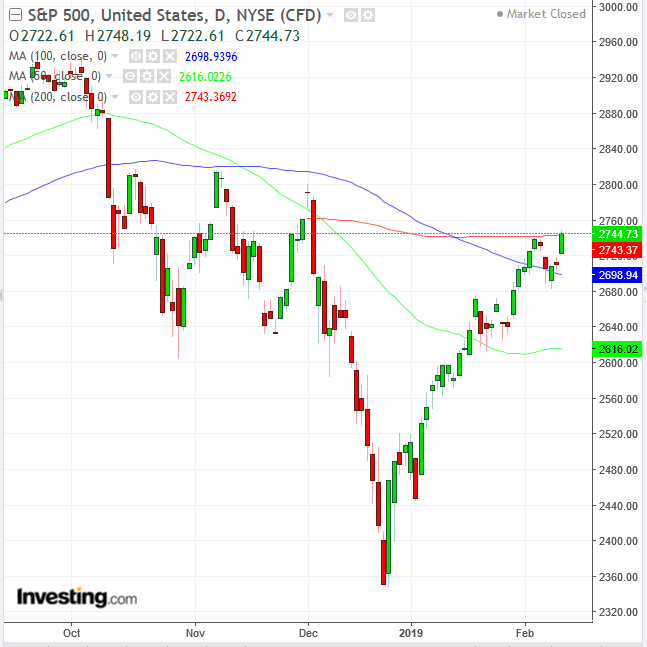If anyone tells you they know where the S&P 500 is headed next, don't believe them.
We can, of course, take some clues from the delicate if very inexact science of trading, by looking at the weight of the fundamental and technical evidence—which is itself at least a somewhat subjective concept. Still, based on this evidence, one can at least attempt to make informed decisions, which could, with any consistency, dramatically increase our results.
We have been bearish on the market since last month and we still are. But that doesn’t mean that the market won't take different turns depending on such factors as investor sentiment or U.S.-China trade. Or the famously erratic decision-making of U.S. President Donald Trump.

This changeability is clearly illustrated via the technical evidence on the daily chart. The S&P 500 has been trading within a rising channel since the post-Christmas Eve rebound. While notable media outlets emphasize that the benchmark closed above the 200 DMA, it barely did so—less than 0.1% higher.
That's nothing to write home about and leaves everything still open. The price, while reaching the highest point since Dec. 3, has stopped climbing, remaining below a downtrend line that goes back to November.
The RSI, while providing a positive divergence as it climbed above its November-December levels isn't following the price, which is lower than its February peak, delivering a negative divergence. This positive-negative picture is drawing a potential Head & Shoulders top for the momentum indicator.
The MACD is the most overbought since January 2018 and is weakening, thus setting up to trigger a sell signal.

The picture may become clearer if we take a step back and look at the weekly chart going back to 2017. From this perspective, both price and RSI are in clear negative trends. The only outlier is the MACD, which just provided a buy signal.
But considering it’s a lagging indicator, the dramatic whipsaw since December left it little choice. Naturally, a sudden sharp rally after a a dramatic decline will trigger a buy signal, but can this sudden up-move be considered reliable?
Given that prices have been biased to the downside since January 2018, we're forced to respond with a resounding no. In fact, what we're seeing looks like a massive down-sloping Head & Shoulders top.
For this reason, we won't be getting caught up in the current Wall Street frenzy. We maintain our bearish posture.
